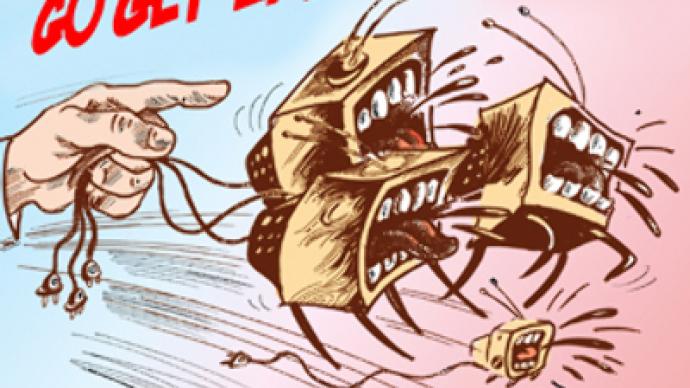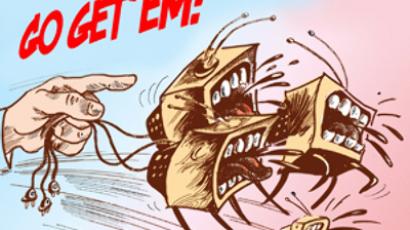Spin-a-battle: how Ukraine invented the “Konotop Massacre”

The famous battle of an unknown war. On July 11, Ukraine celebrates its victory in the Battle of Konotop.
A few years ago that battle was hardly known outside a very narrow circle of historians who deal with armed conflicts and politics of Eastern Europe in the XVII Century. To an average English speaker the name meant nothing.
Thanks to the Ukrainian powers-that-be, the event is now getting to be known as a massacre of “Russian occupational forces” by “Ukrainian patriots” and their Tatar and Polish allies in 1659 off the town of Konotop. Some Ukrainian writers have now arrived at the figure of 300,000 Russian casualties. They started with 30,000 in 1995 when it was first suggested that the battle should be celebrated nationwide.
To the eye of an innocent person the battle now looks like the most successful (for the independent Ukraine) clash in a Russo-Ukrainian war, and it is slowly making its way into the brains of the Western public in this form and shape.
The catch here is that there was no Russo-Ukrainian war, there was no Russian occupation of Ukraine, the forces that met at Konotop consisted of Ukrainians, Tatars and Russians on both sides, and, first and foremost, there was no Ukraine, independent or not.
There were ‘Ukrain’ – in other words ‘frontiers’ of the Russian (Moscow) state on its borders with the Polish Republic (the Poles elected their King for life and had a parliament-like body composed entirely of nobles) – or, if we look from the other side, frontiers of the Polish Republic on its borders with Russia.
And also there were ‘Ukrainians’ – the Cossacks, the militant, free descendants of runaway serfs and fugitives who had settled in the most inaccessible areas on the banks of the rivers Dnepr and Don, and by the XVII Century had become a well-organized semi-independent military force of considerable strength and vast combat experience. They were the first to use the word Ukraine, not in its direct meaning (i.e. frontier) but to designate themselves as a separate ethnos or, rather, a separate ethno-religious group (Christian Orthodox Ukrainians) emerging from and among the population of the country in which they lived: the Grand Duchy of Lithuania.
The Grand Duchy consisted then of the whole area occupied by modern Ukraine, Lithuania and Belarus. It was a supposedly equal part of the Polish Republic, while the Republic itself was also known as the Union state of Poland and Lithuania.
The war that really happened
The war during which the battle of Konotop took place was fought in 1654 – 1667 between Russia (The Moscow State) and the Polish Republic. The Grand Duchy of Lithuania was the theater of that war. The Cossack leadership, Christian Orthodox as most of the population in the areas where the Cossacks operated, in spite of enjoying the privileges of the Polish nobility, harbored a pro-Russian sentiment and hoped for a wider autonomy under Russian Tsars. The Russians were Orthodox Christians like themselves, while in the Roman Catholic Poland, quite tolerant to the people of other faiths, the Cossacks still felt as ‘second-rate’ nobility.
During the war that raged through the areas populated by ‘Ukrainians’ the Cossack supreme leader of the time, Hetman Bogdan Khmelnitski, signed a treaty with Moscow on behalf of his people (to be exact – his troops and their families). It was also in that document that Ukraine as a territorial entity was first defined internationally. The Hetman asked Russia to accept his people together with the lands belonging to them, and the Russian Tsar of the time, Alexey Mikhailovich Romanov, did as he was asked, gaining an ally against Poland in the process.In Russian and Soviet history that document was called the act of the Great Voluntary re-Union of the Ukrainian and Russian Peoples (sometimes – of Russia and Ukraine). Soviet-time spin accepted the existence of a Ukraine (as a separate state) in the XVII Century and presumed that the Russian and Ukrainian peoples reunited after four Centuries of separation that had passed since the fall of the Kiev Rus.
In fact, only the agreement with Russia signed in 1654 gave Ukraine the legal status of a separate territory (voluntarily entering “under the hand of the Russian Tsar”), while a later (1659) agreement with Poland, denouncing the previous agreement with Russia, elevated Ukraine to an independent principality (under the name of the Principality of Rus) and had it join the Polish republic as an equal partner with Poland and Lithuania. That union was not to last: by 1660 Ukraine as a frontier province was back with Russia, then out again, to join again after that.
The war between Russia and Poland lasted over a decade and included such episodes as the above mentioned agreement on the voluntary incorporation of Ukraine into Russia under Hetman Bogdan Khmelnitski, a ‘parallel’ war – the Swedish invasion and occupation of Poland; the liberation of Poland, the severance of Ukraine’s ties with Russia and an oath to Poland under Hetman Vyhovski, who replaced Khmelnitski after his death, the Russian defeat at Konotop, the defeat of Vyhovski by his fellow Cossacks that followed, the elevation of Khmelnitski’s son Yuri to Hetmanship, the second Union with Russia, the flight of Vyhovski to Poland and his five-year stint as a Polish Senator, his death by firing squad as a traitor to Poland, then the ‘Eternal Peace’ between Moscow and Warsaw.
The Russo-Polish war was a clash of equals in which the conflicts in and over the Ukrainian part of the Grand Duchy of Lithuania were important but not decisive. It was the time when the Radziwill family plotted for independence of the whole Grand Duchy from Poland with the title of the Grand Dukes reserved for themselves. When the Sapieha family came to prominence as the Radziwills’ main rivals, it was the time when not only Ukraine but also Belarus and modern Lithuania were emerging as separate ethnic and territorial entities.
Both Russia and Poland were states inspired by Ancient Rome. Moscow considered itself to be the Third Rome (the Second having been Byzantium) as the center of Christianity in its ‘purest’ form (Orthodoxy). In Catholic Poland the republican institutions of Rome were copied, Latin was spoken or quoted on a daily basis (among the educated nobility) and the Senators commissioned genealogical research to prove their descent from Roman statesmen. Both states were eager to expand and bring forth civilization as they understood it, to the newly acquired territories.
Both were expanding eastward while Russia also expanded westward, and that inevitably caused confrontations between them with Russia’s advantage of expanding eastward into mainly unsettled lands and Poland fighting for densely populated and developed territories in Eastern Europe.
What’s in a battle?
Against this grand background the Konotop battle doesn’t look like a significant episode. The only claim to significance it actually has is the fact that Russian horses were severely defeated by the Cossack and Tatar cavalry units, which lured the whole of the Russian mounted forces, led by a hot-headed General Prince Pozharski, into an ambush. The several horse regiments that were overrun by the Cossack-Tatar force in that battle consisted of the sons of the most prominent Russian families with their companies and squadrons, and that is the main reason for this battle to go down in Russian history as a defeat (there is no exact figure of Russian casualties except the report by an investigator from the Tsar’s Chamber of Secret Affairs who had been sent to the army to check on casualty statistics and arrived several weeks before Konotop. His estimate was close to five thousand dead and wounded in Horse and none in Foot).
The Konotop battle confirmed the reputation of the river Konotopka, which had given the name to the town near which the battle happened. Konotopka means ‘Horse Drowner’. During the battle, when the Moscow horsemen had crossed the river in pursuit of a detachment headed by the Hetman himself, the Cossacks crushed the bridge into the river, partly blocking it and thus instantly creating a huge swamp in which the retreating Russian cavalry was trapped several hours later.
However, the battle is also known as the one of the first combat encounters in which foot soldiers had a distinctively independent role. The three-day organized retreat to the nearest Russian fort in which, by the order of General Prince Trubetskoy, supply carts, fortified by makeshift means, were set around the ranks of the foot soldiers and artillery for protection, became a unique maneuver that saved thousands of lives. The army slowly moved along, surrounded from every side with the ‘moving walls’ and shot its smaller artillery pieces and muskets at the enemy at will. There is no proven figure of the Cossack horsemen who fell to that three-day long demonstration of firepower, but not a single Russian foot soldier died.
Several weeks after the battle the Cossacks rebelled against Hetman Vyhovski and the Ukrainian part of his career was completed.
For those of our readers who want to know about these events in greater detail I would recommend to read the works by Russian, Polish and Ukrainian historians, to see what every side says about that period. Any national historian is at least slightly biased, because he writes the history of his own nation in which the other nations become the ‘supporting cast’. That is perfectly normal: a reader, done with a few articles or books from each of the three sides, can form his own opinion.
One thing that everyone who has done that may probably agree upon is the fact that the Konotop battle does present very interesting material for historical research, but lacks very much the significance that requires a nation-wide celebration presided over by the president of Ukraine.
Besides, it is a dangerous path – to start celebrating minor victories over your neighbors and strategic partners. It leads to such a shift in one’s perception of the past that makes it easy for him to create a conflict in the present.
Evgeny Belenkiy for RT.














